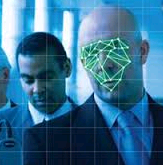
It’s the how the future is meant to be, isn’t it? The good guys need to find a bad guy in a crowd of people, so they start scanning the environment with a camera that is equipped with facial recognition technology. Seconds later, they scan a face that’s a positive match with an entry in their criminal database and bam, they’ve smoked him out.
That future, however, is already here. Sort of. Facial recognition’s potential is substantial, even if it isn’t fully realized yet; its level of accuracy isn’t quite high enough to be used in the aforementioned scenario, at least not with a high rate of success. But it is good enough to already be implemented into a number of different vertical markets including commercial sectors, marketing, healthcare, and hospitality.
And in many cases, says Bob Lorenz, executive video specialist at Panasonic, facial recognition is a "force multiplier and an enabler" that’s being layered on top of existing systems.
"For example, in the retail space, shops will already have existing security cameras in place —to watch people for shoplifting— but now they’re capturing these faces,” says Lorenz. “And if they do catch someone, they will store these faces into their databases and next time [that face] is seen, a notification can be sent out to store personnel or security officers. It’s a subcomponent added to the infrastructure that’s already deployed.”
Jay Hauhn, CTO and VP of Industry Relations for Tyco Integrated Security, breaks down the use of facial recognition into two categories: cooperative environments and non-cooperative environments.
In the former, the person whose face is going to be scanned is aware of it and is opting into a process where it’s serving as their credential; they’re going to look straight into a camera with no attempt to obscure their face. Non-cooperative environments, however, are when the subject is not necessarily aware that their face is being scanned and is making no attempt to look directly at the camera. […]
Source: cio.com
